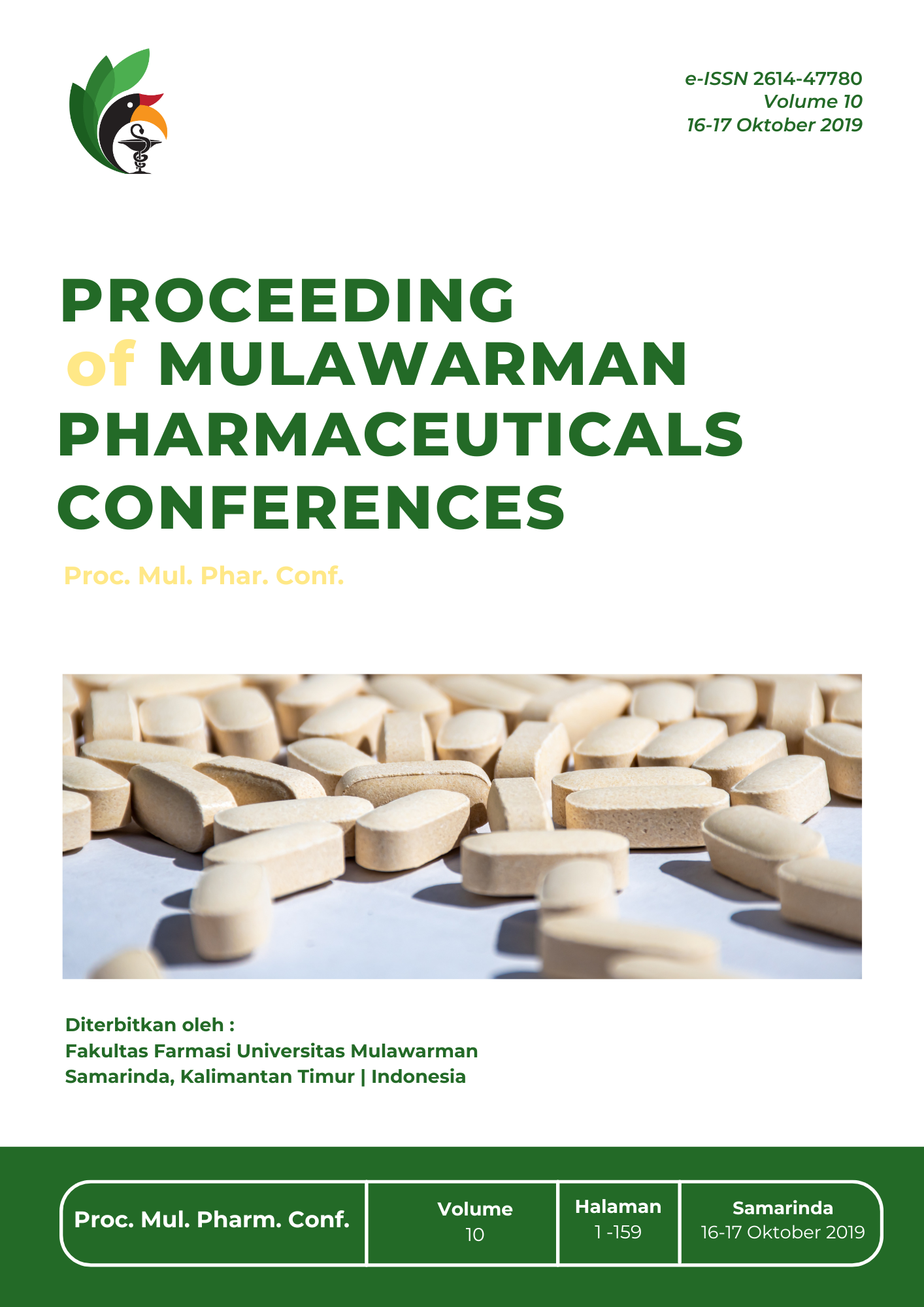Gambaran Hasil Aktivitas Antioksidan Berberapa Perlakuan Teknik Preparasi Pembuatan Konsentrasi Ekstrak Kulit Buah Nanas (Ananas comosus L.Merr) Menggunakan Senyawa DPPH (1,1-diphenyl-2-picrylhydrazyl)
DOI:
https://doi.org/10.30872/mpc.v10i.58Keywords:
pineapple fruit skin (Ananas comosus L.Merr), antioxidants, DPPH, 1,1-diphenyl-2-picryhydrazyl, DilutionAbstract
Pineapple skin (Ananas comosus L.Merr) has been known to have a category of strong antioxidant activity against reducing DPPH compounds (1,1-diphenyl-2-picrylhydrazyl). However, references to the preparation process of extract concentration making and the treatment of DPPH compounds to extracts are not much elaborated, so that it can cause errors in inferring the category of antioxidant activity. The purpose of this study was to determine the results of antioxidant activity through the treatment of preparation techniques for the concentration of pineapple peel extract concentration. Pineapple peel extract (Ananas comosus L. Merr) was prepared by maceration method using 70% ethanol solvent. Testing of antioxidant activity was carried out using the UV-Vis spectrophotometric method at a wavelength of 516.4 nm. The extract concentration to be tested was 500 ?g/mL, 250 ?g/mL, 125 ?g/mL, 62.5 ?g/mL and 31.25 ?g/mL and the concentration of DPPH compounds (1,1-diphenyl-2-picrylhydrazyl) was 45 ?g/mL. Treat the extract making concentration divided into 3 namely P1 (multilevel dilution with a volume ratio of 1: 1) P2 (normal dilution with a volume ratio of 1: 1) and P3 (DPPH solution is used to suffice the volume of the extracted test extract). The results of percent inhibitors from each treatment of making concentrations showed P1 <P2, P1 <P3, P2 <P3, and IC50 of each treatment were P1 268.07 ?g/mL, P2 was 231.28 ?g/mL, P3 was 78.403 ?g/mL. Based on the results of IC50 P3 gives the category of antioxidant activity that is 78,403.
References
Diaz, P., Jeong, S. C., Lee, S., Khoo, C., Koyyalamudi, S. R., Bo, M., & Gan, S. 2012. Antioxidant and anti-inflammatory activities of selected medicinal plants and fungi containing phenolic and flavonoid compounds. Chinese Medicine, 7 (1), 1–9. Retrieved from Chinese Medicine.
Hasanah, N. 2015. Aktivitas Antioksidan Ekstrak Etanol Daun Salam. J. Pena Medika, vol 5 (1), 55-59.
Karadag, A., B, Ozcelik., S, Saner. 2009. Review of Methods to Determine Antioxidant Capacities. Food Analytical Methods. Vol 2 (1). 41-60.
Nadzirah, K.Z.; Zainal, S.; Noriham, A.; Normah, I.; Siti Roha, A.M.; Nadya, H. Physico-chemical properties of pineapple variety N36 harvested and stored at different maturity stages. Int. Food Res. J. 2013, 20, 225–231.
Putri, Ade aprilia Surya,. dan Nurul Hidajati,. 2015. Uji Aktivitas Antioksidan Senyawa Fenolik Ekstrak Metanol Kulit Batang Tumbuhan Nyiri Batu (Xylocarpus moluccensis). J. Unesa of Chemistry, 4 (1), 1–6.
Rukainure, O., Ajiboye, J., Adejobi, R., Okafor, O., Kosoko, S.
and Owolabi, F. (2011). Effect of pineapple peel extract on
total phospholipids and lipid peroxidation in brain tissues of rats, Asian Pacific Journal of Tropical Medicine 4(3): 182–184.
Downloads
Published
Issue
Section
License
Copyright (c) 2019 Syarifah Maryam Alaydrus, Wahyu Widayat, Laode Rijai (Author)

This work is licensed under a Creative Commons Attribution-NonCommercial 4.0 International License.


